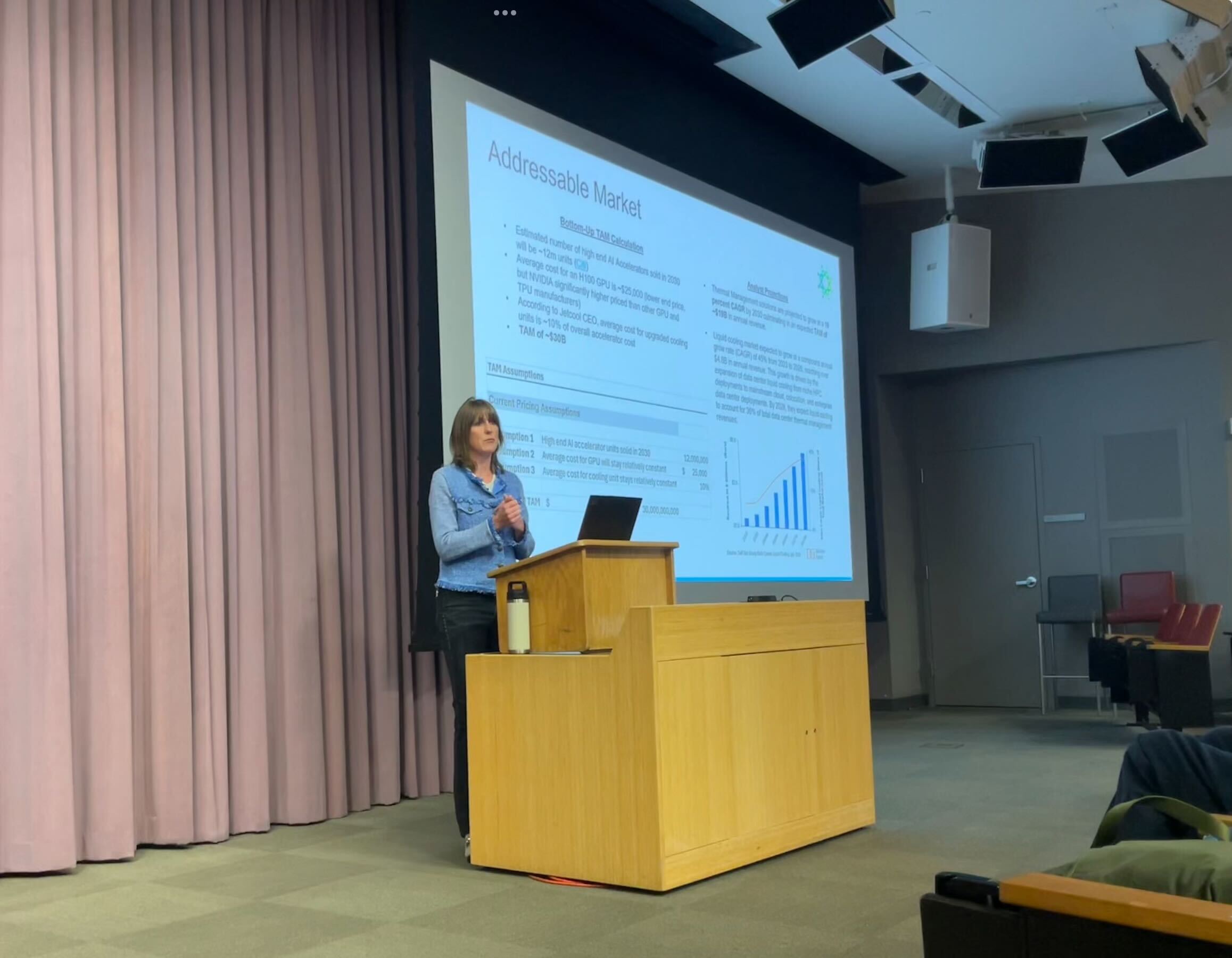Hutchins business owners say recent Wilmer-Hutchins shootings are hurting economic growth – Dallas News

Report on the Socio-Economic Impact of School Violence in Hutchins, Texas, and its Relation to Sustainable Development Goals
1.0 Incident Overview
On April 15, a non-fatal shooting occurred at Wilmer-Hutchins High School in Hutchins, Texas, resulting in injuries to four students and one teacher. This report analyzes the subsequent socio-economic impact on the local community, with a specific focus on its implications for achieving the United Nations Sustainable Development Goals (SDGs).
2.0 Economic Repercussions and Challenges to SDG 8: Decent Work and Economic Growth
The incident has created significant challenges to local economic stability, directly impacting the objectives of SDG 8. The immediate aftermath saw a considerable downturn in commercial activity, threatening the viability of local enterprises and the livelihoods they support.
- Immediate Financial Losses:
- Pete’s Cafe, a new local business, reported an estimated loss of $500 per day in the week following the shooting.
- Jamaica Mi Hungry, another local restaurant, experienced a sustained 20% decrease in sales.
- Threats to Long-Term Economic Growth:
- The incident places newly established businesses, already considered “high risk,” under increased pressure of closure.
- Local business owners express concern that recurring violence may deter new investment and residential migration, slowing the city’s planned economic expansion.
- The negative perception of safety jeopardizes the city’s Comprehensive Plan, which anticipates growth driven by population shifts from Dallas and Fort Worth.
3.0 Community Impact and Setbacks for SDG 11 and SDG 16
The shooting has undermined progress toward creating safe, resilient communities and fostering peace, key targets of SDG 11 and SDG 16.
3.1 SDG 11: Sustainable Cities and Communities
The violence has diminished the city’s appeal and sense of security, which are foundational to a sustainable community.
- Community anxiety has led to reduced patronage of local establishments.
- There is a perceived risk that the area will become less attractive to prospective residents and entrepreneurs.
- Research indicates that such incidents typically lead to a decrease in home values by approximately 3%, further destabilizing the community’s economic base.
3.2 SDG 16: Peace, Justice and Strong Institutions
The event represents a significant failure in ensuring public safety and peace, core tenets of SDG 16. While security measures like metal detectors were implemented at the school, their circumvention highlights institutional vulnerabilities.
- The incident was the second shooting at the high school within a year, indicating a persistent challenge to local peace and security.
- The community’s sense of safety has been eroded, impacting social cohesion.
4.0 Supporting Research on Economic Consequences
A study by Texas A&M University and Indiana University corroborates the anecdotal evidence from Hutchins, quantifying the adverse economic effects of school shootings on local communities.
- Grocery store spending in affected areas drops by an average of 2%.
- Restaurant and bar sales decline by a more significant 8%.
- For restaurants, which often operate on a 4-5% profit margin, an 8% sales drop can be debilitating.
- Areas surrounding schools with shootings see a decrease in new business openings.
5.0 Proposed Strategies for Recovery and Advancing Sustainable Development
In response to these challenges, local business owners and researchers propose community-centric solutions that align with the principles of the SDGs.
- Promoting Decent Work (SDG 8) and Reducing Inequalities (SDG 10): Business owners suggest hiring local high school students to provide them with employment, income, and a sense of purpose, which can help disrupt cycles of poverty and violence. Estella Hernandez of Pete’s Cafe has already implemented this by hiring students and parents from the school.
- Building Strong Institutions and Partnerships (SDG 16 & SDG 17): Researchers emphasize the need for partnerships between schools, local businesses, and law enforcement. Such collaborations can create a unified front that enhances community safety and reassures residents, fostering the strong institutions required by SDG 16.
- Fostering Sustainable Communities (SDG 11): By becoming more deeply engaged with community needs, businesses can help restore a sense of security and shared purpose. This includes creating safe spaces and actively participating in local initiatives beyond commerce.
Analysis of Sustainable Development Goals in the Article
1. Which SDGs are addressed or connected to the issues highlighted in the article?
-
SDG 4: Quality Education
- The article’s central event is a shooting at Wilmer-Hutchins High School. This directly relates to the need for safe and secure learning environments, which is a fundamental component of quality education. The violence disrupts the educational process and creates an atmosphere of fear for students and teachers.
-
SDG 8: Decent Work and Economic Growth
- A significant portion of the article details the negative economic consequences of the school shooting on the local community. It discusses the financial struggles of small businesses, such as Pete’s Cafe and Jamaica Mi Hungry, which experienced sharp declines in sales, threatening their viability and the livelihoods of their owners and employees. This connects directly to sustainable economic growth and the health of small enterprises.
-
SDG 11: Sustainable Cities and Communities
- The article highlights how violence impacts the overall health and appeal of the city of Hutchins. Business owners worry that the shooting makes the area “less appealing for new residents and aspiring business owners,” slowing overall growth. The mention of a decline in home values and the community’s sense of safety are core issues related to creating sustainable, safe, and resilient communities.
-
SDG 16: Peace, Justice and Strong Institutions
- This goal is fundamentally about promoting peaceful and inclusive societies, which includes reducing violence. The school shooting is a clear example of the failure to protect citizens, particularly children, from violence. The article discusses the incident itself, its recurrence (“the second at the high school in a year”), and the community’s subsequent feelings of anxiety and lack of safety.
2. What specific targets under those SDGs can be identified based on the article’s content?
-
Target 4.a: Build and upgrade education facilities that are child, disability and gender sensitive and provide safe, non-violent, inclusive and effective learning environments for all.
- The article directly addresses this target by describing a school environment that is not safe. The occurrence of two shootings within a year at Wilmer-Hutchins High School, despite the implementation of security measures like metal detectors, demonstrates a failure to provide a secure learning environment for students and staff.
-
Target 8.3: Promote development-oriented policies that support productive activities, decent job creation, entrepreneurship, creativity and innovation, and encourage the formalization and growth of micro-, small- and medium-sized enterprises.
- The article’s focus on the struggles of small businesses like Pete’s Cafe, which lost “$500 a day,” and Jamaica Mi Hungry, which saw a “20% decrease in sales,” illustrates how violence undermines the growth of small enterprises. The debilitating impact of an 8% drop in sales on restaurants with thin profit margins is a direct challenge to this target.
-
Target 11.1: By 2030, ensure access for all to adequate, safe and affordable housing and basic services and upgrade slums.
- While not about slums, this target’s emphasis on safe housing is relevant. The article cites research showing that “Home values decreased by about 3%” in areas surrounding school shootings, directly impacting the housing market and the financial security of residents. This decline reflects a community perceived as less safe and desirable.
-
Target 16.1: Significantly reduce all forms of violence and related death rates everywhere.
- The entire premise of the article is based on an act of violence—a school shooting where “four students and a teacher were injured.” The event is a direct manifestation of the violence this target aims to reduce. The article discusses both non-fatal and fatal shootings, linking them to widespread negative community impacts.
3. Are there any indicators mentioned or implied in the article that can be used to measure progress towards the identified targets?
-
Indicators for Target 4.a and 16.1:
- Number of violent incidents in schools: The article explicitly states this was the “second at the high school in a year,” which is a direct measure of the frequency of violence.
- Number of victims of violence: The article notes that “four students and a teacher were injured,” providing a quantifiable measure of the human cost of the violence.
-
Indicators for Target 8.3:
- Percentage change in sales for local businesses: The article provides specific data points, such as “grocery store spending dropped by about 2%, while restaurant and bar sales dropped by 8%” and a “20% decrease in sales” for one specific restaurant.
- Daily financial loss for small businesses: Pete’s Cafe “lost about $500 a day the week after the April shooting,” offering a concrete financial indicator of the economic impact.
- Rate of new business openings: The article mentions that research found a “decrease in new businesses opening” in affected areas, which can be tracked to measure economic confidence and growth.
-
Indicator for Target 11.1:
- Percentage change in home values: The article directly states that “Home values decreased by about 3%” in communities affected by school shootings. This is a clear, quantifiable indicator of the impact on the local housing market and community desirability.
4. Table of SDGs, Targets, and Indicators
| SDGs | Targets | Indicators |
|---|---|---|
| SDG 4: Quality Education | 4.a: Provide safe, non-violent, inclusive and effective learning environments for all. |
|
| SDG 8: Decent Work and Economic Growth | 8.3: Promote policies that support… the growth of micro-, small- and medium-sized enterprises. |
|
| SDG 11: Sustainable Cities and Communities | 11.1: Ensure access for all to adequate, safe and affordable housing. |
|
| SDG 16: Peace, Justice and Strong Institutions | 16.1: Significantly reduce all forms of violence and related death rates everywhere. |
|
Source: dallasnews.com

What is Your Reaction?
 Like
0
Like
0
 Dislike
0
Dislike
0
 Love
0
Love
0
 Funny
0
Funny
0
 Angry
0
Angry
0
 Sad
0
Sad
0
 Wow
0
Wow
0

















































:focal(1500,1000)/https://media.globalcitizen.org/a6/9a/a69a4720-d8a1-4715-b596-18738d03c05c/rotary_polio_hero_image.jpg?#)






/countries/sri-lanka/photo-credit---dmc-sri-lanka.tmb-1200v.jpg?sfvrsn=dc298bcc_1#)
















